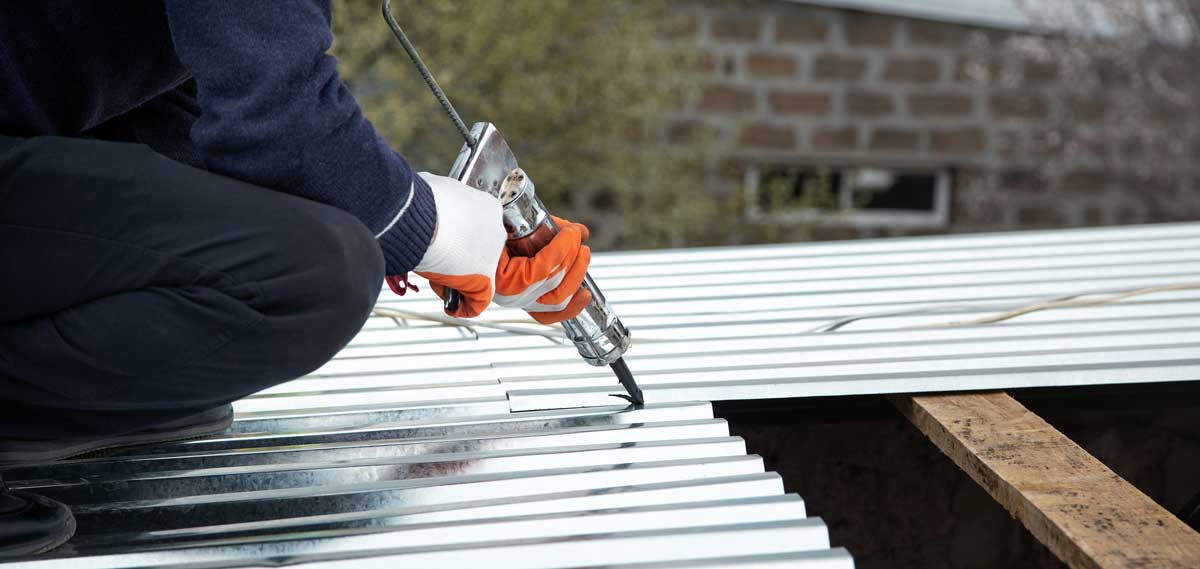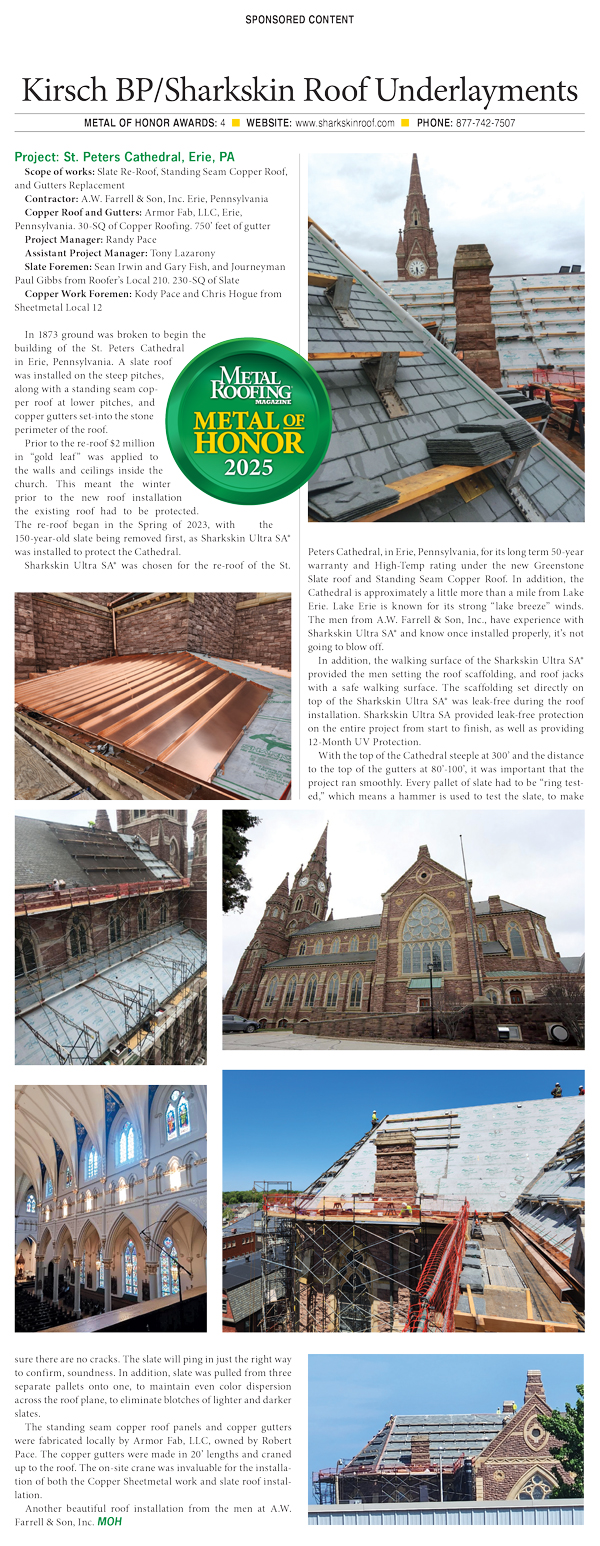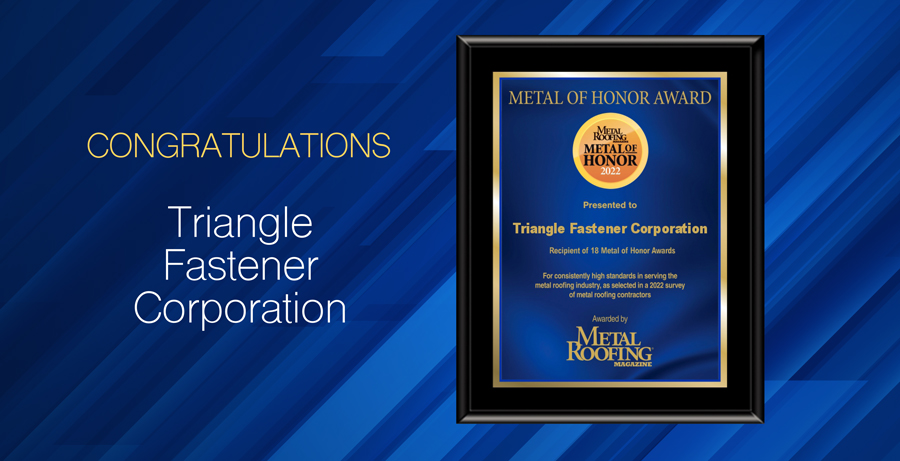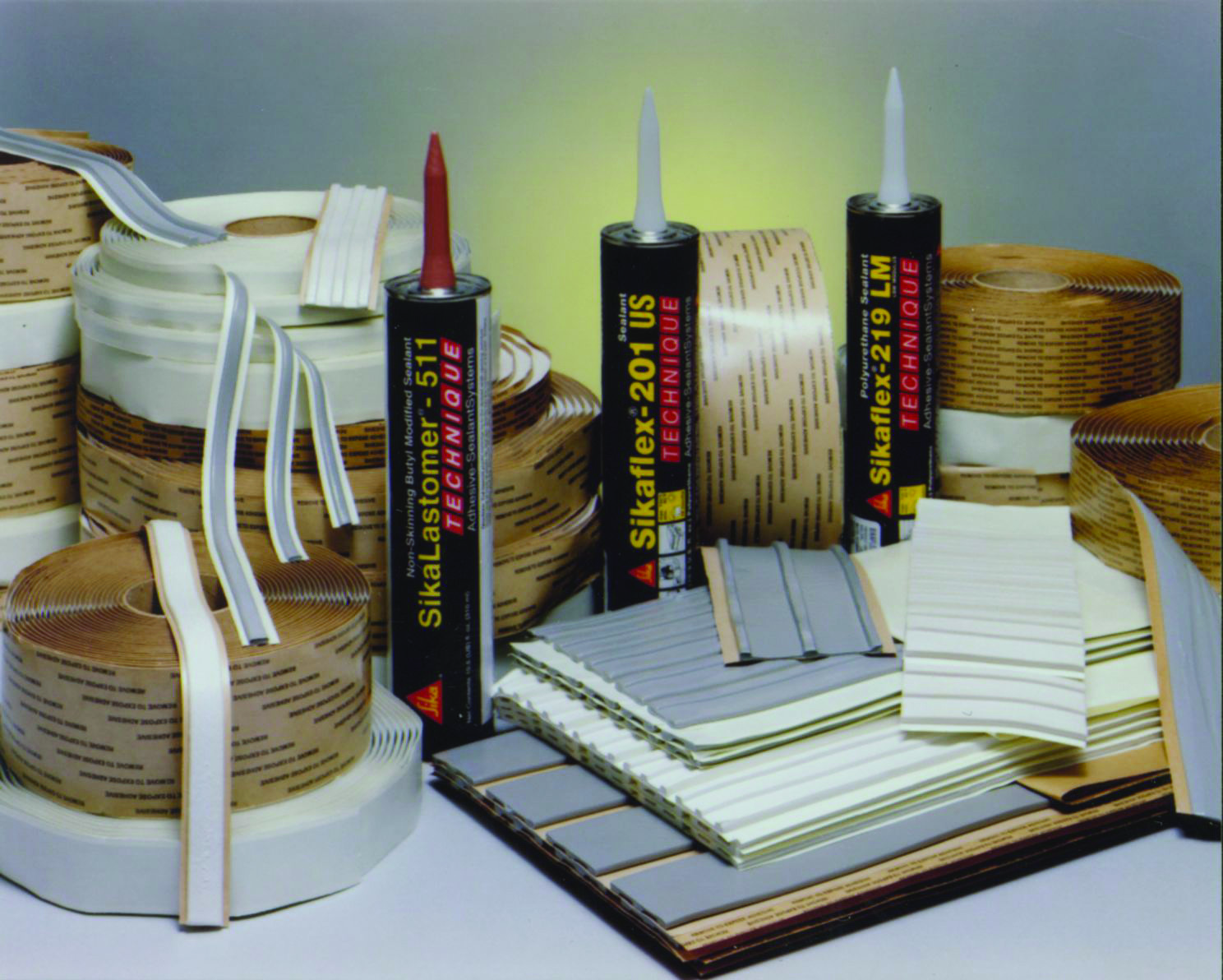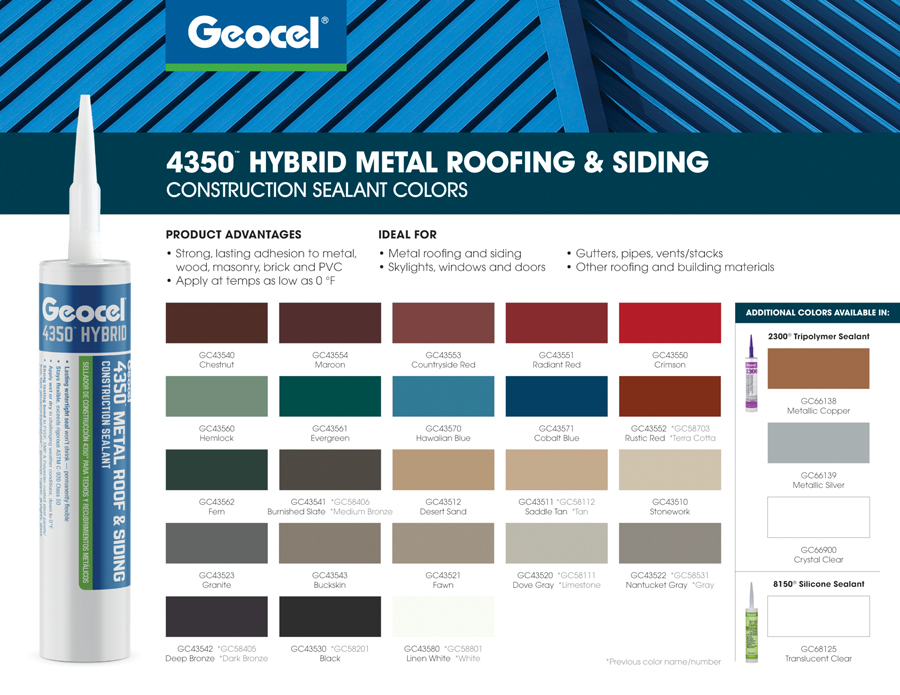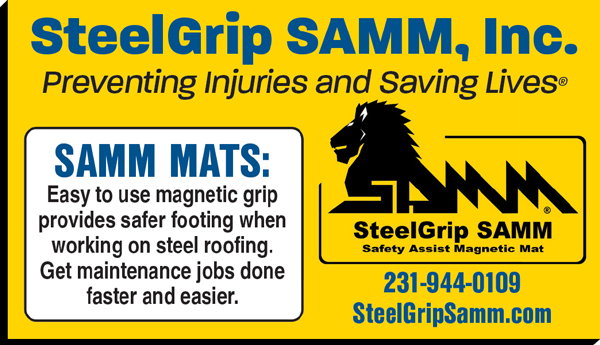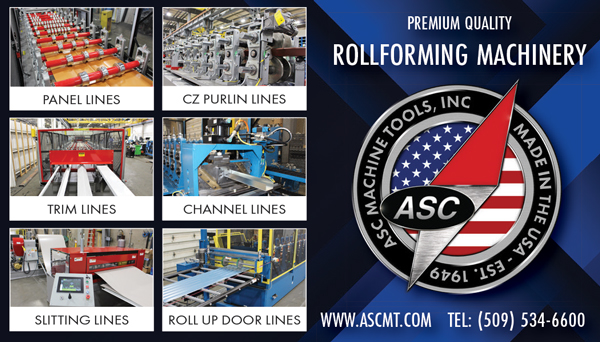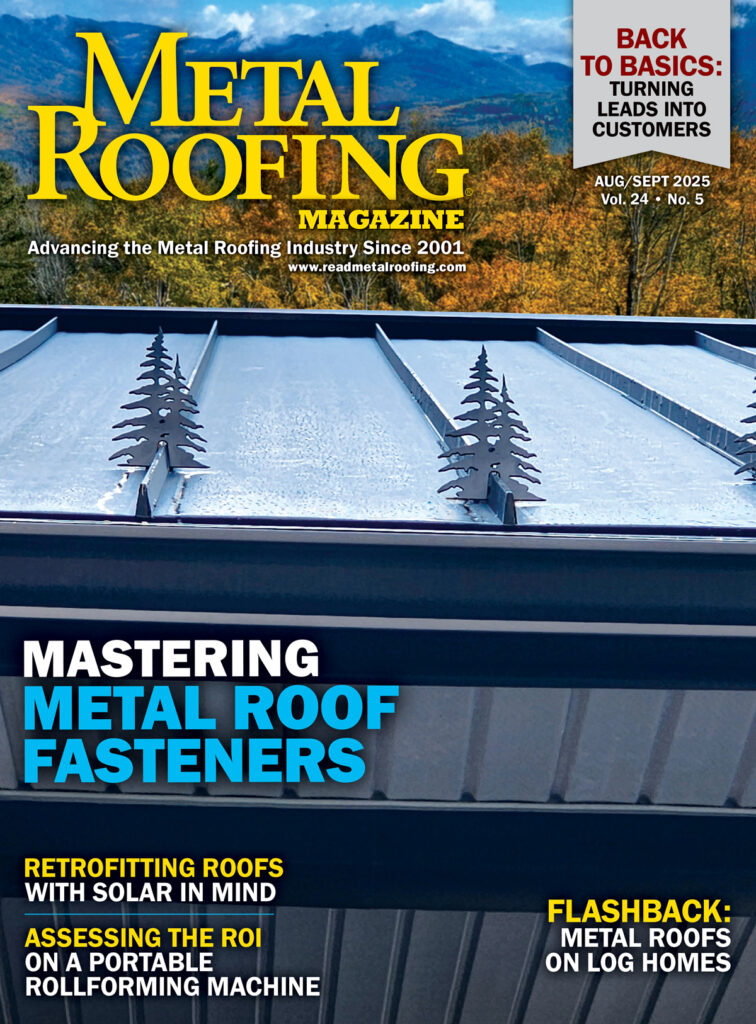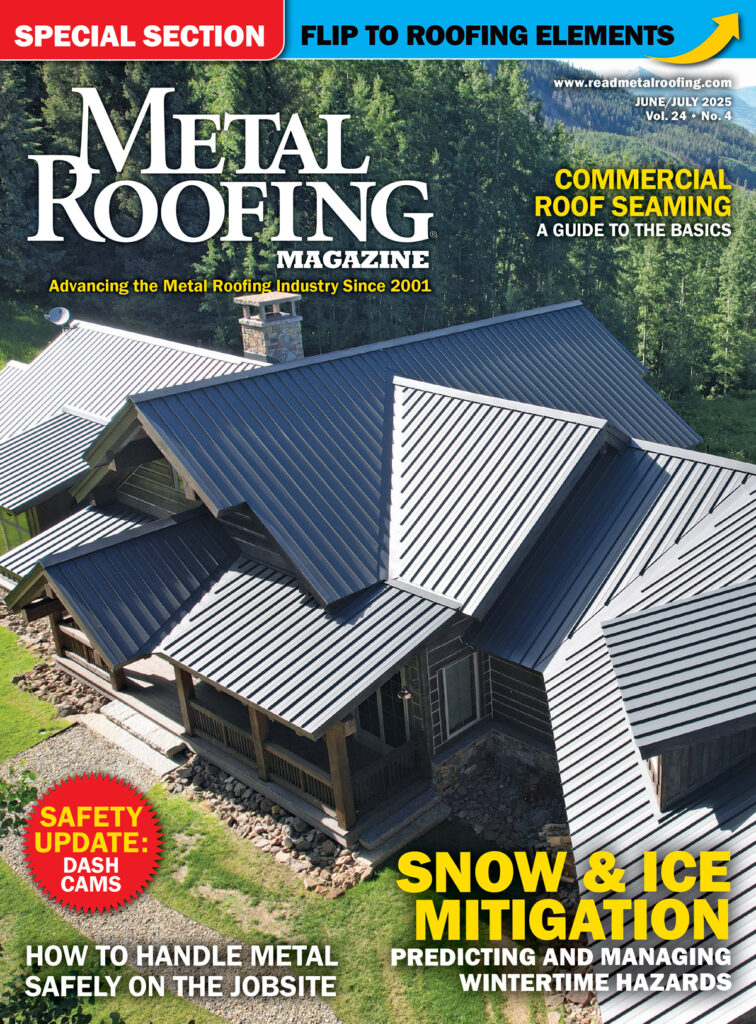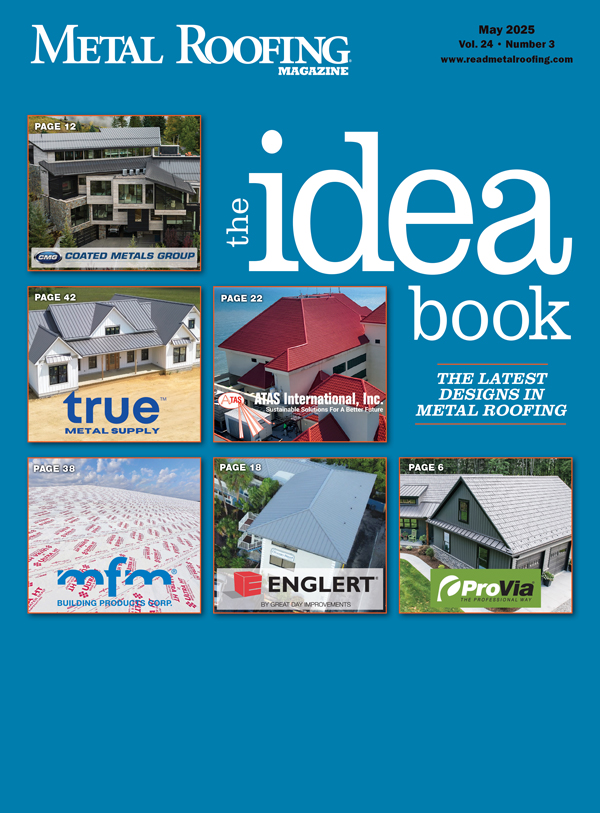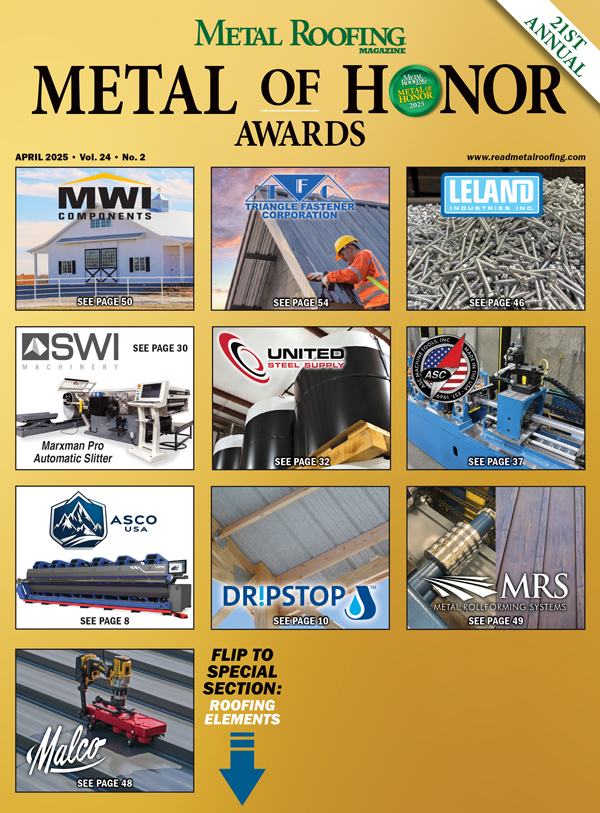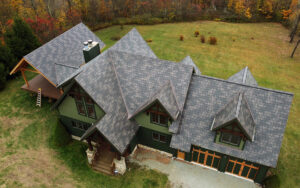The purpose of using sealants when installing a metal roof is to prevent moisture and air infiltration, along with creating a barrier against dirt, dust, and other debris. Any time metal roof panels or accessories overlap or connect, frame an opening, or meet features like fascia, flashing, roof ridges, or walls, the detail needs sealant. The same goes for any spot where the roof surface is penetrated—such as standing seam panels at end laps and seams, roof jacks, smoke vents, or roof curbs for HVAC or skylight installations. Sealant is also needed at roof ridges and around any mechanical fasteners. Properly sealing these areas helps ensure a leak-free, long-lasting roof. The type of sealant and its application are determined by the roof system and the situation.
Hidden Fastener Systems and Sealant Use
Metal panels with hidden fastener systems generally don’t require sealants directly underneath. However, sealants are essential in areas such as hips, rakes, ridges, skylights, boots over vents, or other protrusions with exposed fasteners. These sealants help form a moisture barrier and ensure a proper seal between surfaces. Additionally, a sealant helps lock the fastener in place over long periods of time and works like an adhesive.
For this purpose, durable and versatile butyl tape is usually used, along with high-quality caulks. However, different types of sealants used in different applications present unique challenges.
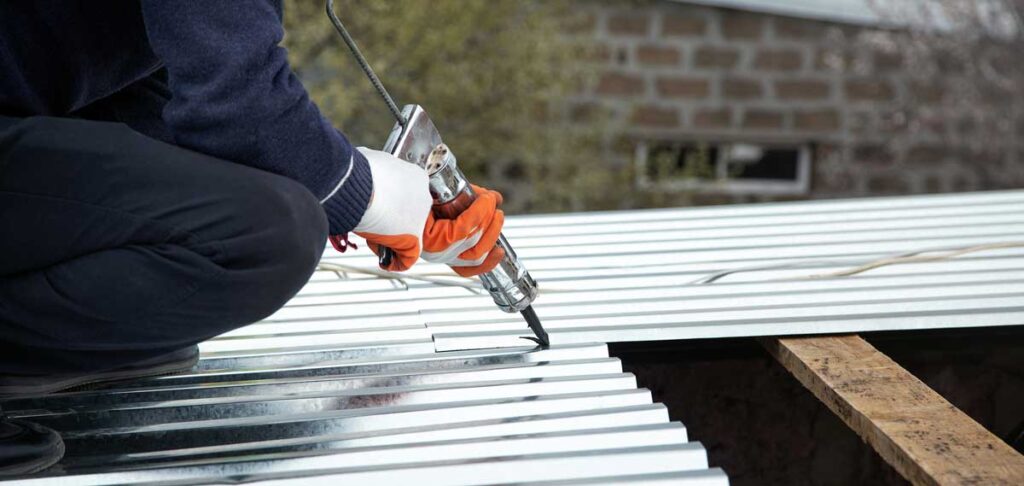

Butyl tape is a versatile and effective sealant solution. Photo courtesy GSSI
Challenges of Sealants in the Elements
Caulk-based sealants have a tendency to start drying out or cracking over time. These inexpensive options, which are often water-based and contain a lot of cheaper fillers, degrade when exposed to high roof temperatures and UV rays. This leads to shrinkage, brittleness, and eventual cracking.
To ensure longevity, manufacturers typically recommend using moisture curing elastomeric sealants. These superior caulks solidify into a flexible, rubber-like material by absorbing moisture from the air or by mixing with a curing agent. Their flexibility allows them to withstand roof movement and temperature changes over the years.
Another recommended option is solvent-based sealants, which cure when the solvent evaporates over a short amount of time. These products are particularly effective in varying weather conditions and can typically be applied in temperatures below freezing. Hybrid sealants—combining polyurethane and silicone—are also an effective choice, as they provide excellent durability and adhesion.
One key factor in sealant failure is improper application. Even high-quality caulks can fail if applied too thinly or onto a surface that is not properly cleaned. Also, If the sealant is pulling away from the substrate, it may indicate that its adhesive properties are weaker than its cohesive strength.
Choosing the Right Sealant for Metal Roofs
Avoid latex sealants – While inexpensive, they tend to crack over time and are not effective for metal roofing.
Use high-grade modified silicone caulks – These provide superior flexibility and adhesion, and they are available in many colors, along with clear formulas.
Consider season-specific products – Some caulks become hard and difficult to apply in cold temperatures, while others may run in extreme heat. Look for formulations that stay soft and workable year-round.
Store sealants properly – Avoid leaving them in hot trucks or humid conditions overnight, as improper storage can affect performance. Additionally, avoid leaving certain types of sealants in freezing conditions, if they are not freeze-thaw stable.
Application and Storage Best Practices
A smooth and clean application is key to ensuring a sealant performs well. Use a caulk gun with a retractable plunger, which allows for better control and a more balanced flow of sealant.
When working in hot conditions, some sealants may run or create a mess. Choose a product designed to maintain its consistency at higher temperatures. Sealants developed using rheology testing (which studies the flow of materials) are designed for optimal performance in various conditions.
In colder months, some sealants may become too hard to extrude and apply properly. In these situations, choose a product that remains pliable even in frigid conditions, and opt for sealants packaged in plastic tubes rather than paper ones, as they hold up better in extreme weather.
Adhesion, Discoloration, and Dirt Resistance
One major challenge with sealants is their long-term adhesion to metal surfaces. Over time, some caulks lose their grip, leading to leaks. To combat this, use sealants with advanced polymer formulas, which provide a stable, long-lasting bond to metal. Hybrid silicone-urethane products offer both the elasticity of silicone and the strong adhesion of urethane, making them ideal for roofing applications.
Other Considerations for Sealant Selection
Sealant movement capability – Many caulks are rated as Class 35, meaning they can handle 35% movement of the joint width in either direction. For metal applications, Class 50 sealants are preferable for better flexibility.
Discoloration issues – White-colored caulks may yellow over time if they contain impure raw materials. Look for products with UV inhibitors to prevent discoloration.
Tackiness and dirt accumulation – Some sealants remain tacky long after drying, which causes them to hold on to dirt and dust. Opt for products that lose their tackiness within 24-48 hours and have a faster curing time to prevent debris accumulation.
Sealants for Copper and Other Metals
Copper presents unique challenges when it comes to sealant adhesion. When copper is milled, it produces an oil residue that prevents bonding. Additionally, patina formation under the sealant can cause the bond to weaken over time.
To address this, neutral-cure silicone sealants are recommended over acetoxy silicones; they maintain adhesion to copper longer than other types.
For galvanized metal, some roofers use an abrasion technique to improve adhesion. However, this practice removes the protective coating and galvanization, potentially compromising the metal’s durability. Instead, use sealants specifically formulated for pre-coated panels. Many manufacturers produce caulks designed for Kynar-coated panels, which have superior UV resistance and long-term performance.
The Role of Butyl Tape in Metal Roofing
Butyl tape is a popular sealing option due to its strong adhesion, easy application, and long-lasting durability. It is particularly effective for:
• Lapping two pieces of metal together (overlaps)
• Sealing non-exposed joints
• Protecting seams and vents
Butyl tape is widely used because it remains rubberized, tacky, and flexible for years. It also doesn’t dry out or crack over time and can be applied in extremely hot or cold temperatures.
However, butyl tape is typically not ideal for sealing roof penetrations, such as when installing metal boots over plumbing vents. In these cases, caulk is the better option. In addition to the obvious aesthetic reasons, caulk ensures a tighter fit and retains its adhesion. (One exception is EPDM boots, since most caulks don’t adhere well to this material.)
Conclusion
Selecting the right sealant for metal roofing is crucial for long-term performance and leak prevention. Each sealant type has its strengths and weaknesses, and knowing when and where to use them can make all the difference.
By understanding the properties of elastomeric caulks, hybrid formulations, advanced polymer sealants, and butyl tape, you can ensure a well-sealed, durable metal roof that withstands the elements for years to come.
Direct Metals, Inc. • www.directmetalsinc.com
Dynamic Fastener • www.dynamicfastener.com
GSSI Sealants • www.gssisealants.com
Levi’s Building Components • www.levisbuildingcomponents.com
Marco Industries • www.marcoindustries.com
Novagard • www.novagard.com
Sealers, Inc. • www.sealersinc.com
ST Fastening Systems • www.stfasteningsystems.com
Triangle Fastener Corporation • www.trianglefastener.com


